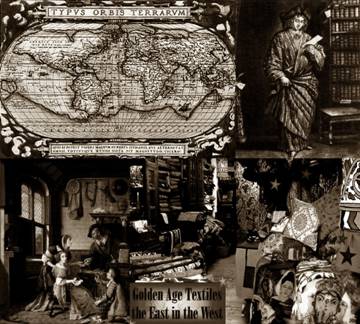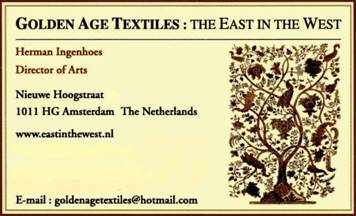



|
In the 17th century the sea-routes from Northern Europe to Asia started to be navigated, and Holland gradually became a foremost western economic world power in the ‘early modern world’.
Our project highlights and brings back an almost forgotten historical phenomenon that came forth out of the intercultural relations between Europe and Asia in the ‘Golden Age’ of Holland..
Luxurious “East Indian Stores” could be found in 17th and 18th century Amsterdam, and they provided the ‘new rich’ of Holland the famed and sophisticated artistic materials of the ancient Asian civilizations that had come within reach of Northern Europe.
With the help of our friends, artists and craftsmen and -women around Asia, we have put much effort in recreating the environment of this famous type of store, in the old city of Amsterdam.
In our project we wanted to make our visitors experience the admiration that ‘early modern’ western culture had, for the refined artistic expressions of the ancient civilizations of the East.
Here under you will find a summary of the types of arts and crafts that have been presented in our projects’ store, and some external links for clarification.
|
|
Oriental textiles were world-famous throughout history and highly prized since the ancient world. Before the Europeans had direct access to Asia by sea, these precious materials from the Indian subcontinent and China reached Europe overland via the Silk road The beautiful multicolor and colorfast Chintz or Sits became highly prestigious material for the well-to-do in 17th century Holland, and was applied in the home interior as decorative element and as ‘show-off garment’ , as for example the ‘Japanese style chintz robe’
|
|
Oriental ceramics and especially the Chinese porcelain , produced since ancient times, was considered highly sophisticated and useful material. It was also greatly admired for its artistic quality and exotic beauty. Oriental ceramics were used as tableware and applied for decorative purposes. The best pieces of these Asian ceramics were collected and displayed in the Porcelain Cabinet that functioned as prestigious element in the interior of wealthy citizens in 17th century Holland.
|
|
Exotic rarities and of course Asian art formed an important part of the extensive collections in the rarities cabinets and the exhibitions of curiosities of the elite in Holland and across Europe. Exotic artifacts and ethnographic materials from distant cultures in these encyclopedic collections gave the owner great prestige in the early modern world as cosmopolitan citizen, and as imagined master-investigator of the newly discovered world. In the 17th century Amsterdam was famed around Europe for the quality and the range of exotic materials that could be found in the city. |


|
__________________________________________________________________________
Page 1
Page 3
|
|
_________________________________________________ |
|
___________________________________________________________________________________________________________ |
|
____________________________________________________________________________________________________________ |
|
____________________________________________________________________________________________________________ |